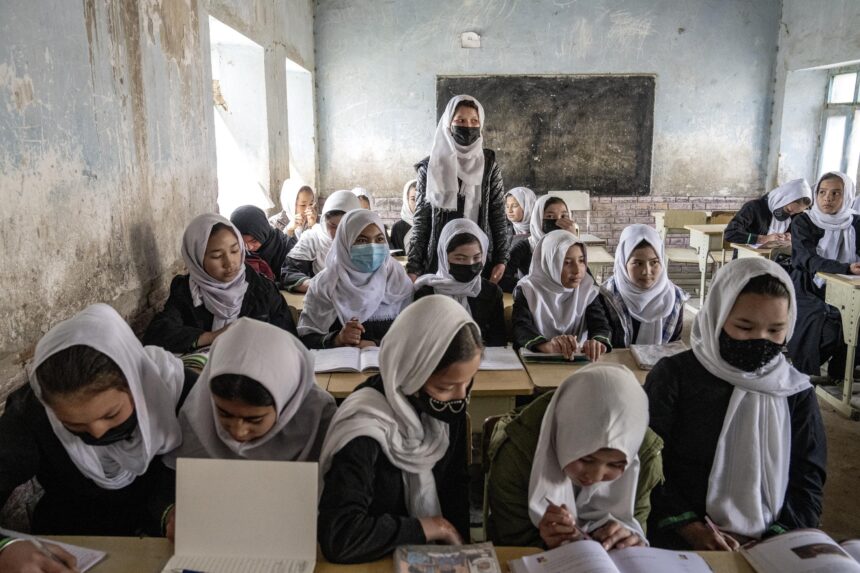Over a thousand days after the Taliban takeover of power in Afghanistan, women and girls are reluctantly moving abroad to pursue their education.
Hasina was relieved as soon as she crossed the border into Iran. The 24-year-old medical student was denied access to further education by the Taliban for two years. Hasina is currently studying in Tehran as part of an increasing number of Afghan women fleeing their country in search of a better education.
She recalls, “I was afraid the Taliban would stop me from leaving.” One hundred female Afghan students were stopped last year as they were about to board a plane to start their scholarship at a university in the United Arab Emirates.
Hasina, whose full name is not disclosed due to privacy and security reasons, fled Afghanistan as a precaution and obtained a tourist visa to Iran. Her father went with her; they appeared to be a family visiting, but he returned home alone. Hasina is studying to be a surgeon at the Iran University of Medical Sciences in the Capital.
According to Vahid Haddadi-Asi, the deputy minister of science and international affairs, over 40,000 Afghan students, primarily females, are currently enrolled in Iranian universities. The Norwegian Refugee Council claims that more than 600,000 Afghan students are enrolled in schools across Iran, citing a government decree in 2015 that allows them to enroll in Iranian public schools regardless of their legal status.
According to Mahmoud Farazadeh, Iran’s ambassador to Germany, the number of Afghan students has increased since the Taliban came to power. “The importance of education, particularly for women can’t be overstated. Afghan women and girls who have been denied education are welcomed to apply to Iranian universities,” he added.
It is difficult to obtain precise figures regarding the number of Afghans living in Iran because many enter through unauthorized border crossings, making paperwork more complicated. Since the Taliban took power, estimates suggest that over one million Afghans have migrated to Iran. Many families left Afghanistan in search of education for their wards. In Afghanistan, at least 1.5 million girls are still not allowed to attend school.
Iran has emerged as the last choice for many Afghan women keen to complete their education due to many cultural similarities and a common language. Iran has an 85% female literacy rate, while Afghanistan has only a 23% rate, according to the World Bank, despite significant funding for education during the 20 years of the US-led invasion.
Iranians have expressed concerns over the increasing number of Afghans entering the nation as the Afghans have reported discriminating and demeaning behavior on multiple occasions.
Pushbacks at the border have also been reported. Iran might gain from inflow, given that its population growth rate decreased from 2.3% in 2015 to 0.7% in 2022. Accredited Afghan students not only contribute to the Iranian economy but also have the potential to become future workforce members.
The Majority of ladies simply want to get out of Afghanistan and go elsewhere to rebuild their shattered dreams. “I don’t have hope if the state of Affairs for women continues like it has,” Farzaheh stated.














